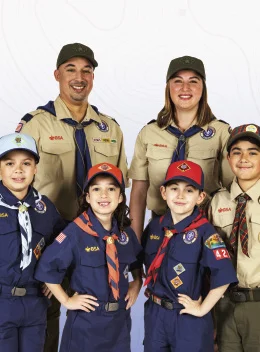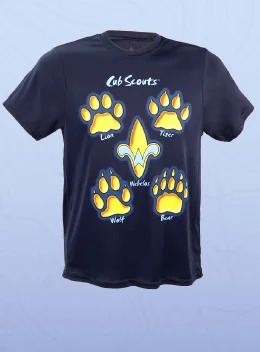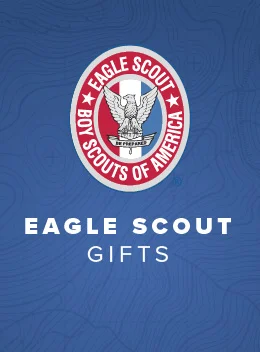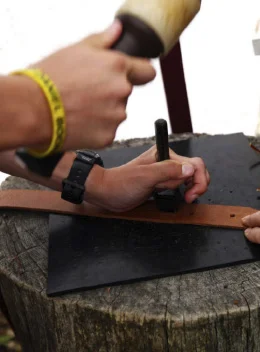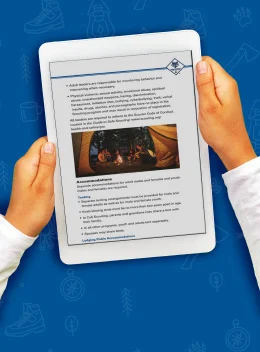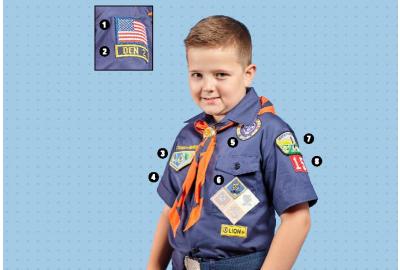Patch Trading at the 2023 National Scout Jamboree
Trading Council Patches is a Scouting Tradition
The National Scout Jamboree is a week-long adventure in the heart of Appalachia, where Scouts from around the country make memories that last a lifetime. With so many Scouts from different backgrounds in one place, patch trading at the Jamboree has become one of Scouting's greatest traditions—a practice representing the fun and good fellowship of everyone in the BSA community. If you're gearing up to attend the biggest Scouting event of 2023, read on to learn more about the dos and don'ts of patch trading and discover why the practice has endured for generations.


What is Patch Trading?
In the early days of Scouting, Scouts swapped keepsakes like pins, neckerchief slides, and uniforms. There weren't as many patches available back then as today. The only patches accessible to Scouts were rank, merit, and position badges. It wasn't until the first National Scout Jamboree in 1937—and the subsequent Jamborees that took place in the 1950s and 60s—that patch trading gained immense popularity. With so many Scouts from around the country gathering in one place every few years, the National Jamboree was the perfect event for Scouts to exchange patches and celebrate newfound friendships. Today, Scouts collect patches to honor the camaraderie within the BSA and remember the friends, activities, and excitement of their adventures at the Jamboree.


Patch Trading Dos and Don'ts
Some might say patch trading is more than collecting rare and unique patches—it's a lifestyle! One might be hard-pressed to find a Scout who doesn't love the art of collecting emblems. Not only is it a super fun activity, but it's also a great way to meet new people and talk about different aspects of Scouting. Whether you collect them because you like the colors or the events associated with the patches, there are many reasons why patch trading has become one of the greatest traditions in Scouting. Above all, Scouts should look back at their patch collection and remember all the fun they had at the Jamboree with other kids their age.


Today, there are over 200 local councils in the United States, each with its unique Council Strip Patch (CSP), the emblem that goes on the shoulder of the Scouting uniform. You can collect different rank patches, Order of the Arrow emblems, and any of the 135 Merit Badges, some that no longer exist and others that are brand new to Scouting. With so many patches to collect, it can be a little overwhelming for first-time traders to learn the etiquette of the activity. To help you out, here are some dos and don'ts of patch trading at the National Jamboree.
Patch Trading Dos
- Do get several patches or diverse sets from councils all around the country.
- Do follow the Scout Oath and Law. When trading, be courteous and fair. You shouldn't try to win a trade. Instead, make sure both parties are satisfied with the transaction. You want to build trustworthiness when trading with other Scouts.
- Do trade like for like patches. For example, trade a Council Strip for a Council Strip. Also, think of the monetary value of a patch. Would you trade one of your favorite $10 patches for another worth only $1? Would you think that was a fair trade? You should trade patches that are worth the same amount in dollars.
- Shake hands after a trade. Both parties should feel like it was a good trade.
- Maintain your patches in good condition. No one wants to trade for a dirty or torn patch.
- Be kind and respectful of others' patches.
- Focus on collecting one patch type and branch out as you gain more experience trading. For example, start by collecting CSPs.
- Bring a friend with you when patch trading. There will be thousands of Scouts at the Jamboree, and navigating the enormous crowds can be a little confusing if it's your first event.
- Trade with other youth. Youth can trade with Adults if their Adult Unit Leader is present to observe and approve the transaction.
- Have fun and be kind. Patch trading is about making connections that will last a lifetime.
Patch Trading Don'ts
- Don't trade any awards or rank patches. Scouting knots, religious medals, or badges of office should not be traded. Doing so violates the Rules and Regulations of the Boy Scouts of America.
- Don't trade on paths or steps that other people must get through. There will be designated areas for Scouts to engage in patch trading.
- Don't steal other Scouts' patches.
- Don't lie about the monetary value of a patch.
Find Scout Patches at Scout Shop
For spacious tents and cozy sleeping bags, durable mess kits, high-quality backpacks, hammocks, and more camping equipment, visit ScoutShop.org—the official online retail store of the Boy Scouts of America! Whether your Scout is gearing up for the Jamboree or a week-long camping trip, Scout Shop has everything they need to make the most of all their outdoor adventures. We hope these patch trading dos and don'ts will help you collect some cool patches at the 2023 National Scout Jamboree. Share all your newfound relics with us at #ScoutShop_BSA for a chance to be featured on our social pages!




